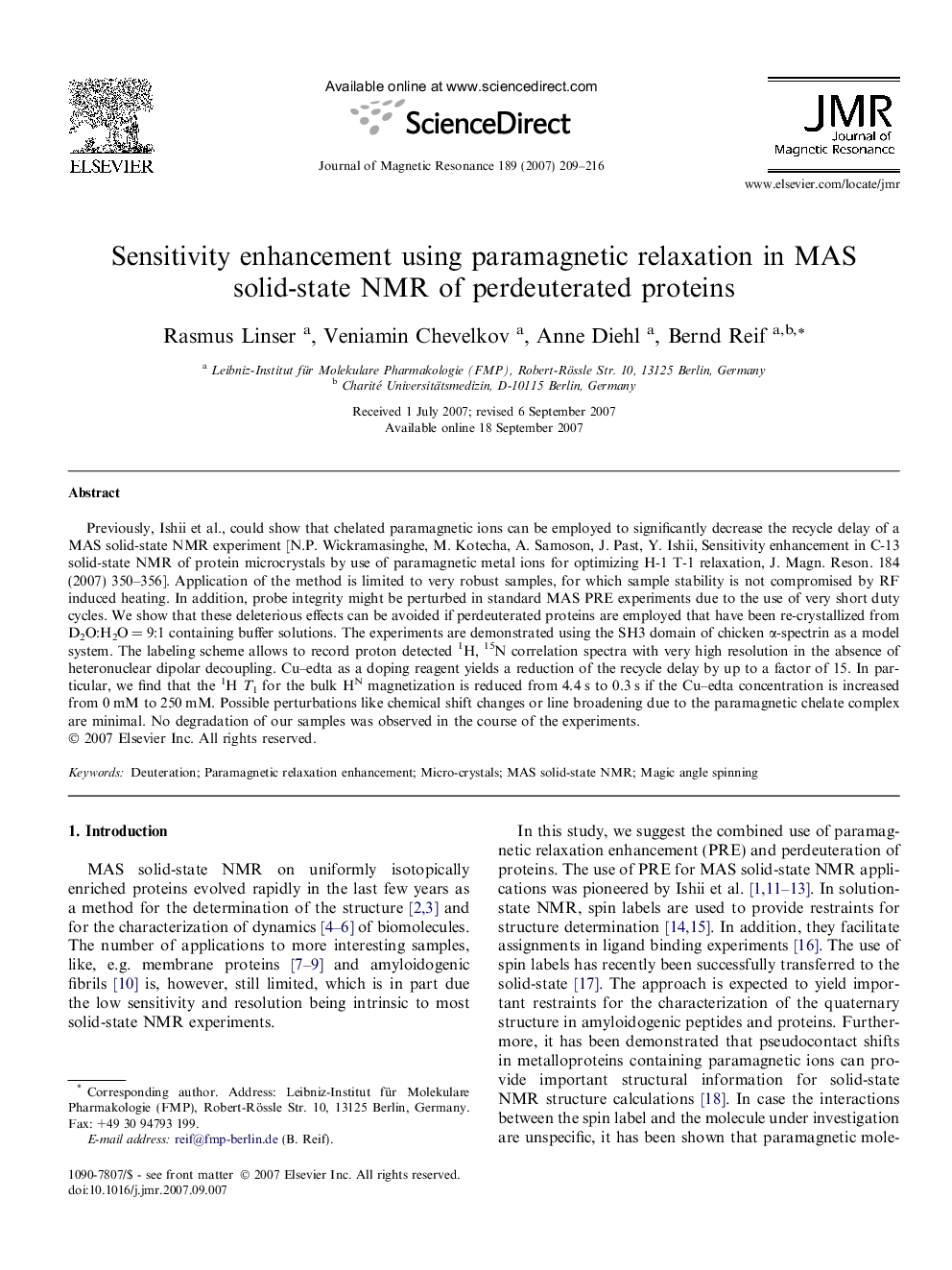| Article ID | Journal | Published Year | Pages | File Type |
|---|---|---|---|---|
| 5407380 | Journal of Magnetic Resonance | 2007 | 8 Pages |
Abstract
Previously, Ishii et al., could show that chelated paramagnetic ions can be employed to significantly decrease the recycle delay of a MAS solid-state NMR experiment [N.P. Wickramasinghe, M. Kotecha, A. Samoson, J. Past, Y. Ishii, Sensitivity enhancement in C-13 solid-state NMR of protein microcrystals by use of paramagnetic metal ions for optimizing H-1 T-1 relaxation, J. Magn. Reson. 184 (2007) 350-356]. Application of the method is limited to very robust samples, for which sample stability is not compromised by RF induced heating. In addition, probe integrity might be perturbed in standard MAS PRE experiments due to the use of very short duty cycles. We show that these deleterious effects can be avoided if perdeuterated proteins are employed that have been re-crystallized from D2O:H2O = 9:1 containing buffer solutions. The experiments are demonstrated using the SH3 domain of chicken α-spectrin as a model system. The labeling scheme allows to record proton detected 1H, 15N correlation spectra with very high resolution in the absence of heteronuclear dipolar decoupling. Cu-edta as a doping reagent yields a reduction of the recycle delay by up to a factor of 15. In particular, we find that the 1H T1 for the bulk HN magnetization is reduced from 4.4 s to 0.3 s if the Cu-edta concentration is increased from 0 mM to 250 mM. Possible perturbations like chemical shift changes or line broadening due to the paramagnetic chelate complex are minimal. No degradation of our samples was observed in the course of the experiments.
Keywords
Related Topics
Physical Sciences and Engineering
Chemistry
Physical and Theoretical Chemistry
Authors
Rasmus Linser, Veniamin Chevelkov, Anne Diehl, Bernd Reif,
